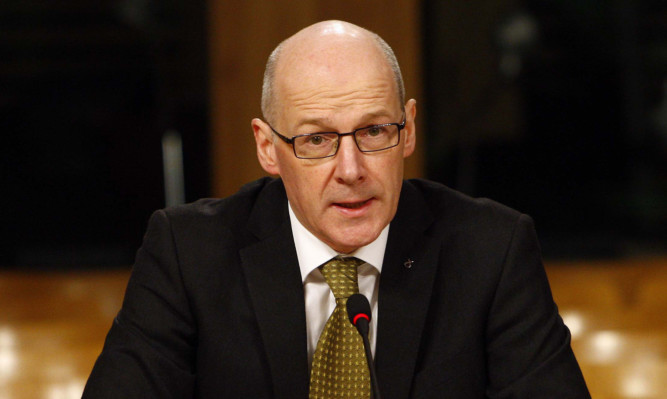Scotland’s Finance Secretary John Swinney has said agreement can be reached this week on financial rules underpinning new devolved powers.
Mr Swinney and Chief Secretary to the Treasury Greg Hands will hold further talks in an effort to break the deadlock over the fiscal framework accompanying the Scotland Bill.
Time is running out for a deal that would set out how Scotland’s annual block grant from the Treasury should be adjusted to take into account new tax powers.
The deadline for agreement has already been pushed back, with Holyrood’s Devolution Committee warning that any delay past February 19 would have “very substantial impacts” on the ability of MSPs to effectively scrutinise the framework.
The Scottish Government tabled new proposals on Friday which it said would address UK Government concerns over fairness to taxpayers across the rest of the UK.
Any deal must meet the principles of taxpayer fairness and “no detriment” – the idea that neither government should gain or lose financially simply as a result of the powers being devolved.
The Scottish Government believes a method known as per capita indexed deduction, which would take into account the fact that Scotland’s population is growing more slowly than the rest of the UK, is the best way of meeting the no detriment principle.
The UK Government says a deal must be fair to all taxpayers and “no detriment” does not mean “no risk”.
Mr Swinney said: “The fiscal framework must remain true to the Smith Agreement which said the Barnett Formula will remain and that Scotland and the rest of the UK should be no better or worse off as a result of having new powers.
“This week I will discuss our revised offer, which addresses every point the Chief Secretary has raised. It ensures that the Scottish budget will bear financial responsibility for the exercise of the proposed powers, and that taxpayers in the rest of the UK are no better or worse off as a result of the new powers being devolved.
“No-one should be in any doubt that there remain very significant issues that are yet to be resolved. These issues are integral to the Smith Commission agreement and must be fulfilled.
“Our proposal is with the Treasury and I hope and believe we can now agree this issue, and the remaining outstanding issues, this week.”
The SNP administration says Scotland stands to lose about £3 billion over 10 years under plans put forward by the Treasury.
The party said that was the equivalent of the salaries of 8,000 nurses or 6,000 police officers each year.
Last week First Minister Nicola Sturgeon dismissed an offer from the Treasury, which included £4.5 billion of compensation for the impact of population growth, spread over 10 years, as “not new or serious”.
In a letter to the House of Commons Scottish Affairs Committee, Mr Hands said the proposal was “fair for taxpayers in Scotland, fair for taxpayers in the rest of the UK, and built to last”.
